Pop It out, was that you’re first thought when you noticed those pimple bumps on your face? Perhaps your mother’s advice when you were younger, “Do not squish them ever,” will help you resist the urge to pop them out. Maybe you’re afraid of scars or marks, and you’re wondering if there’s a natural best way to get rid of pimples.
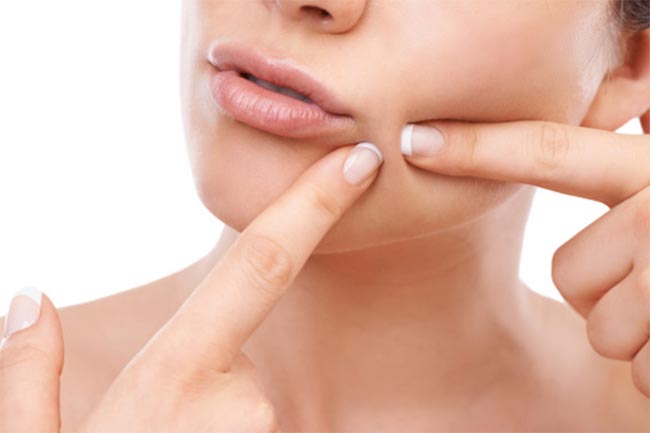
One of the most common skin problems is facial pimples. There are at least 10 million people in India who suffer from pimples. So rest assured that you are not alone in your difficulties.
Despite the fact that pimples are such a common occurrence that almost everyone has them at least once in their lives, these eruptions are associated with low self-esteem. Acne and pimples have been shown in studies to cause low self-esteem in patients of all ages. This is more common in women and girls who have severe acne.
What is the best way to get rid of pimples?
However, losing hope and self-esteem should be the last thing on your mind because these eruptions can be dealt with in a variety of ways. Staying hydrated, resisting the urge to touch your face, moisturising your skin, and washing your face are just a few of the simple yet effective ways to reduce the number of breakouts.
We’ll go over everything you need to know about pimples and how to get rid of them naturally in this article. Let’s start by getting a better understanding of this skin issue.
Highlights:
- What Are Pimples and How Do I Get Rid Of Them?
- What Are the Causes of Pimples? – Risk Factors and Common Triggers
- What Is The Difference Between Different Types Of Pimples?
- What Is The Best Way To Get Rid Of Pimples Naturally?
- Face Map of Acne Pimples
- What Is the Best Way to Get Rid of Pimples Overnight?
- How Can I Get Rid of Pimples Quickly?
Frequently Asked Questions about Pimples.
What Are Pimples and How Do I Get Rid Of Them?
Small blisters, pustules, or papule-like eruptions most commonly seen on the face, back, chest, or shoulders are known as pimples. Inflammation, redness, and sometimes pain are the most common symptoms. It’s possible that they’re pus- or water-filled. They’re also known as zits or spots by some people. Numerous pimples are known to be a symptom of Acne Vulgaris, or Acne in common terms, a skin condition or disease.
Acne Vulgaris is said to be very common in adolescence, affecting more than 80% of teenagers. Furthermore, even after the age of 25, 3% and 12% of men and women, respectively, are prone to developing pimples.
What Are the Causes of Pimples? – Risk Factors and Common Triggers
Pimples affect some people more than others. Understanding what causes pimples can help you manage them better because some of the triggers are simple to avoid. We can modify our lifestyle and adopt some healthy habits to combat pimples if we are aware of these triggers and risk factors.
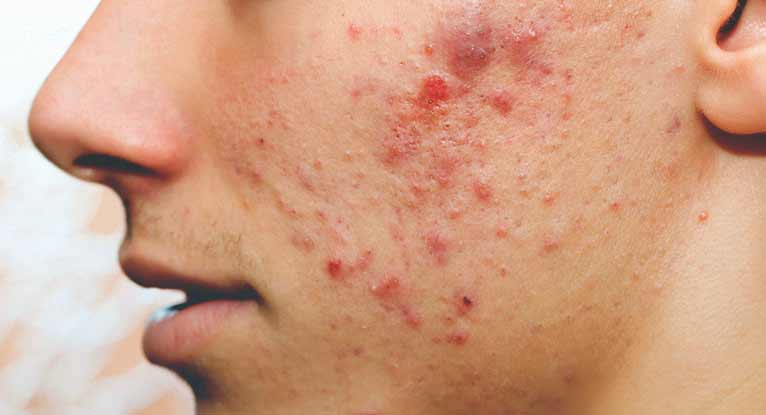
Hormonal Alterations
You’ve probably heard a lot about the link between hormones and these unwelcome eruptions. However, in order to fully comprehend this, you must first understand what sebum is.
The sebaceous glands secrete sebum, which is an oily, sticky, fatty substance. Excess sebum production makes the skin oily and clogs the pores, but it helps to seal moisture and prevent dryness. Except for the palms, soles of feet, and lips, these glands are usually associated with hair follicles and can be found in every part of the human body.
The androgen hormone, specifically male sex hormones such as testosterone, regulates sebum secretion. Androgens flood the human body with the onset of puberty, causing a rise in the level of hormones that secrete sebum. As a result, many people develop acne as soon as they reach puberty. These hormones are regulated and stabilised in males after puberty, but not in females because monthly menstrual cycles, pregnancy, and even menopause cause variations in the secretion of these hormones, causing many to suffer from pimple-related issues all their lives.
Why do people get pimples?
Susceptibility to Disease
According to numerous studies, the genes you carry and your family line do play a role in acne problems. If acne runs in your family and you’ve been unlucky in that your genes haven’t mutated, you’re likely to develop acne as well.
Certain gene mutations, on the other hand, maybe a cause of frequent pimple eruptions even if there is no family history. Acne is also a common symptom of PCOS (Polycystic ovarian syndrome), a disease that has been known to run in families. Furthermore, the risk of developing acne is increased if both of your parents had it, as opposed to just one of them.
Water Consumption
Hydrating your body at all times has a variety of benefits, one of which is a reduction in the number of pimples. When a person’s skin becomes excessively dry as a result of dehydration, there may be an increase in oil secretion, resulting in pimple formation.
Drinking plenty of water keeps this from happening, as well as flushing toxins and harmful bacteria from the body and skin. It keeps the skin moisturised and gives it a healthy radiance. So, don’t take this simple yet powerful liquid for granted; drink at least 8 glasses or two litres of water every day. If you find it difficult to keep up with your water intake as the temperature drops, here’s a tip to help you.
To avoid pimples, drink plenty of water.
Consumption of tobacco and alcoholic beverages
Smoking causes a type of acne known as “non-inflammatory acne” (also known as blocked pores and blackheads). Did you know that when you’re exposed to nicotine and other chemicals, your skin cell turnover (regeneration) increases? As a result, the blood vessels constrict, reducing the supply of oxygen to the skin and igniting the oxidation reaction, altering the amount of sebum produced by the skin.
Alcohol, on the other hand, does not cause acne or pimple breakouts in the first place. Alcohol, on the other hand, causes a spike in blood sugar, which sets off a hormonal domino effect, causing an increase in androgen levels, which then leads to acne.
The effect of alcohol on the liver is well known; if the liver’s function is hampered, the liver’s ability to flush toxins from the body will be harmed. The only way for those toxins to escape is through other channels, one of which is the skin, which would then wreak havoc on the skin, resulting in pimple eruptions.
Pore Blockage
Even our skin has to shed those dead skin cells, just as we do with various methods of rejuvenation. However, these dead skin cells frequently become trapped, resulting in a build-up and blockage of the skin’s pores (hair follicles). These pores are extremely important because they are responsible for the release of oil and sweat. This function is obstructed by clogged pores, resulting in the formation of blackheads, pimples, zits, and other acne-like conditions. Steaming your face can assist in the unclogging of clogged pores.
Using steam to unclog clogged pores.
Products that are comedogenic
Comedogenic products are those that contain ingredients that can cause your pores to close or become blocked. The consequences of blocked pores have already been discussed in depth. A wide range of cosmetics and moisturisers are comedogenic, meaning they can cause acne, blackheads, and whiteheads.
Dandruff
Dandruff can also cause pimples on the scalp and forehead. Malassezia globosa is a skin fungus that causes dandruff. The sebum’s function and breakdown are disrupted by these fungi. They also leave oleic acid behind, which causes acne breakouts on the forehead in people who are sensitive to it.
Stress, climatic changes, poor dietary habits, and a lack of proper facial hygiene are a few other factors that can cause acne breakouts and pimples.
Following a healthy lifestyle and eating a nutritious diet can help you avoid frequent pimple eruptions. If they still appear, the best way to combat them and prevent them is to use natural home remedies for pimples, which do not have any negative side effects.
What Is The Difference Between Different Types Of Pimples?
Not all pimples are created equal. In the previous section, we discussed the various causes of pimples. The type of pimple you get is mostly determined by the cause. The following are some of the most common pimple types.
Acne and pimples come in a variety of shapes and sizes.
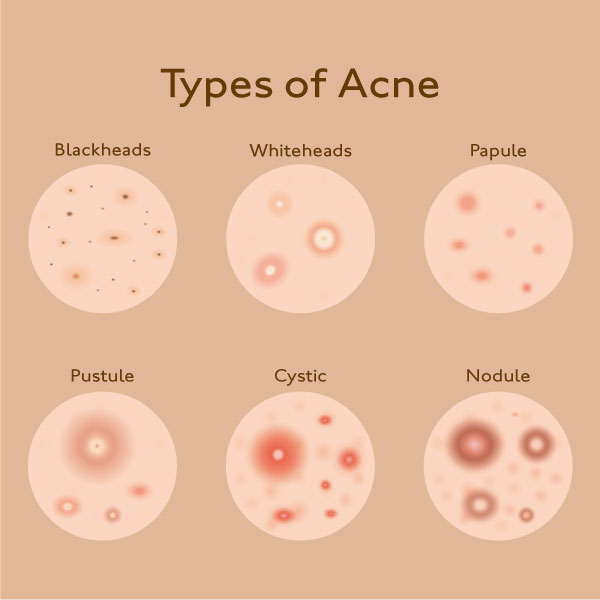
Whiteheads
Whiteheads are tiny bumps or comedones with a whitish colour surface that can be found on the face, as the name suggests. The skin layer above the whiteheads is usually left closed. The main causes of their appearance are clogged pores and excessive oil secretion. They’re most noticeable on the T-zone, which includes the nose, forehead, and chin.
Blackheads
The name, once again, reveals its true identity. In some ways, they resemble whiteheads, except that the skin surface above them is opened. They’re comedones that haven’t been hidden. Contrary to popular belief, the dark colour is caused by the oxidation of oil and melanin, not by dirt being trapped. Melanin is a pigment found in the skin that gives it its colour. An increase in sebum production and clogged pores can also cause blackheads.
Papules
A papule is a small area of skin tissue that appears to be elevated (less than 1cm). It could take the form of a flat disc or a dome. They’re swollen and reddish in colour, and they’re slightly painful. Papules may appear singly or in clusters in one area, giving the appearance of a rash. There may or may not be distinct boundaries between these.
Pustules
Many people think of pustules as a typical pimple with a whitish cap. Whiteheads are not to be confused with them. The white bump is caused by the body’s natural response to infection, which involves white blood cells. Pustules are pustules that contain white blood cells and bacteria. They can be whitish or yellow in colour. They’d also appear swollen and have a reddish border. They’d appear delicate when touched.
Cysts
These can manifest themselves in any part of the body. They resemble a hard bump and are pocket-filled or sac-like in appearance. A cyst is the result of clogged pores, oily skin, and an infection. Cysts are typically benign, but depending on their location, they can also be malignant. Cysts include sebaceous cysts and epidermoid cysts, to name a few. They are pus-filled cysts that form deep within your skin. These take a long time to heal and usually leave a scar.
Nodules
When the skin becomes inflamed, these are mostly skin-toned, but they can also be reddish. Touching them causes severe pain. Because it is severe and difficult to heal, it requires extensive, concentrated medication. Nodules are even more difficult to handle than cysts, and they aren’t filled with pus. They can last for weeks or even months, causing the contents to harden and become deeper.
When the pimple isn’t severe, it can be treated with natural home remedies for pimples; however, if the pimple is painful or has been present for a long time, it’s best to seek professional medical help from a dermatologist or medical practitioner.
What Are Some Natural Ways To Get Rid Of Pimples?
After learning about the various types of pimples and the triggers/causes that cause them, you’re probably wondering if there is a natural way to get rid of them. There isn’t a straightforward yes or no answer. Some severe cases of acne necessitate medical intervention. Ayurvedic remedies, a healthy diet, adequate water consumption, and a positive attitude can all help you get rid of pimples. These remedies are ideal for those suffering from mild pimples or acne.
Amla Powder and Amla Juice (gooseberry)
Amla is a vitamin C-rich fruit that acts as a natural blood purifier. It has a high antioxidant content and helps to reduce inflammation.
Because of its well-known remarkable properties of skin-clearing, amla juice can be consumed as a detoxifying beverage. To make Amla juice, cut three to four amlas in half, add half a cup of water, and a pinch of salt to a mixer or blender, and blend until smooth. Once or twice a week, drink this juice.
A face pack made of amla powder and water would be fantastic. It can be left on for 20 minutes before being washed off thoroughly with plain water. It would reduce pimples, lighten blemishes, and increase collagen production all at the same time.
Since ancient times, the herb neem has been widely used in herbal preparations. Antibacterial, antiseptic, and antifungal properties are all present in these plants. Make a thick paste out of neem powder and water, then apply it to the affected area or areas where pimples or acne are present. Allow for drying time. Rinse with lukewarm water after 20 minutes. This will help to even out your skin tone and shrink the breakout.
Organic Cold-Pressed Neem Oil can also be used as a pimple spot treatment. Neem oil applied to the face on a regular basis has been shown to be an effective long-term acne treatment in studies. By removing acne-causing bacteria, tightening pores, and evening out skin tone, neem oil helps to prevent future breakouts.
pimples and acne neem oil
Tulsi or basil is a herb that has been used for thousands of years.
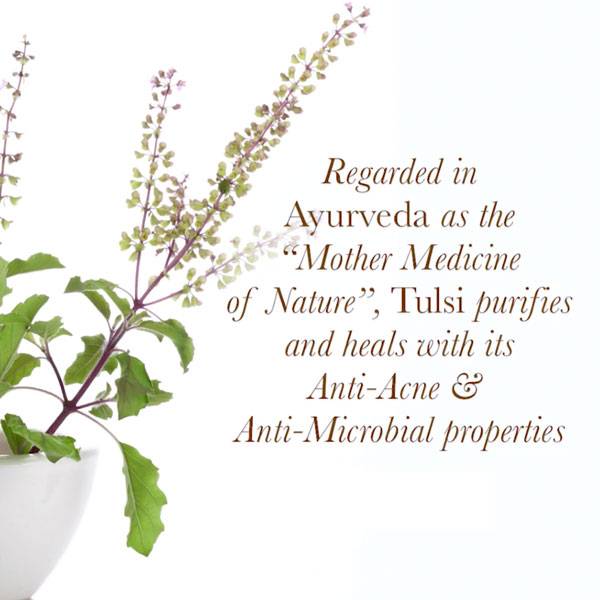
For centuries, tulsi has been used as a medicinal herb. It is well-known for its skin-nourishing and immunity-enhancing properties. Because tulsi has antifungal properties, it helps to prevent acne. To incorporate this leaf into your skincare routine, grind a few tulsi leaves with a few neem leaves, add 1 teaspoon of freshly squeezed lemon juice, and mix everything together into a paste. Apply it to the area that is afflicted. Rinse with plain water and pat dry as soon as it dries off. This pack will clean the pores, remove dirt and impurities, and prevent and heal acne breakouts.
Tulsi is a herb that can be used to treat acne and pimples.
Use Natural Face Cleansers with both Neem and Tulsi as well as Tea Tree Oil as key ingredients to reap the benefits of Neem and Tulsi for Acne. Anti Acne Cleansing Foam from Kama Ayurveda is one of these products.
for acne and pimples neem and tulsi
Watermelons are available now for purchase.
Antioxidants abound in watermelon. They help to regenerate skin cells and repair those that have been damaged. It increases nitric oxide production in the body, which cleans the skin. So go ahead and eat them; they’re not only delicious but they also help to reduce oil production, resulting in fewer acne breakouts. They could also be applied directly to the infected area and left to heal overnight.
Aloe Vera is a type of plant that has been used for centuries
Antimicrobial, anti-inflammatory, and antiviral properties are plentiful in aloe vera. Aloe vera gel can be extracted and applied directly to the affected area or to the entire face for 10 minutes, then washed off with plain water. Because it can rupture the bacterial cell wall, aloe vera aids in pore cleaning as well as reducing bacteria formation. This also aids in reducing the formation of spots.
Tea with fennel, cumin, and coriander.
Coriander & Cumin Fennel tea assists in the cooling of the body and the reduction of toxin production. By soaking 1/3 teaspoon of each seed in hot water, the three-ingredient tea is made. To make this detoxifying drink, the concoction is then strained. To get the most out of it, you should take it three times a day.
Papaya
Papaya has rejuvenating properties, did you know? This fruit is known for nourishing the skin as well as the stomach. Applying papaya pulp to the face removes dead skin cells while hydrating and moisturising the skin. It also has anti-inflammatory enzymes, which aid in the treatment of acne. Papain helps to exfoliate the skin by diffusing proteins. The papaya’s properties work together to prevent pimple formation.
Apply a fine paste of raw papaya to your face and leave it on for about half an hour before rinsing it off with warm water and patting it dry. Acne or pimple-related blemishes will also be reduced with this pack.
Ayurvedic Herbal Mixture at Its Finest
To make a powdered mixture, finely grind the Fennel, Basil, Turmeric, Coriander seeds, Amla, and Coriander seeds. The anti-inflammatory and antioxidant properties of the Ayurvedic ingredients are powerful. To make the ultimate Ayurvedic drink to get rid of pimples, combine half a teaspoon of these ingredients with lukewarm water and drink 15 minutes before lunch or dinner.
Add sandalwood paste, rose water, and turmeric to these ingredients for an external application of the herbal mixture. In the affected area, this could be used for 30 minutes. After that, use cold water to rinse it away.
For pimples, blackheads, pimple scars, and skin inflammation, we also recommend Kama Ayurveda’s Nimrah Anti-Acne Face Pack. This face pack treats acne and pimples with powerful Ayurvedic ingredients such as Vetiver, Ashwagandha, Red Sandalwood, Coriander, Lodhra, and Liquorice.
Now is the time to purchase
Honey
Honey is high in antioxidants and antimicrobials. Clearing acne can also be accomplished by applying pure honey directly to the pimple or scar for 15-20 minutes and then washing it off. This is something that could be used all the time. Honey boosts the skin’s healing abilities while also reducing and preventing the formation of bacteria. It also hydrates and rejuvenates the skin.
Rosewater and Turmeric
Turmeric can remove toxins from the pores. It has antifungal and antibacterial properties, so it keeps bacteria at bay. Turmeric and Rose Water can be used on the entire face or just the affected areas. Rinse your face with water and pat dry after it has completely dried. If you have dry skin and don’t want to use Rosewater, honey is a good alternative.
Shop Now Pimple Acne Face MapTurmeric and Rose Water for Acne
We’ve covered a lot of ground on pimples, and by now you should have a good understanding of how to naturally get rid of them.
We’ll talk about what pimples in different areas of your face mean in this section to help you understand them better. That’s right, you read it correctly. The location where a pimple first appears can reveal a lot about what caused it. Let’s get to the bottom of this pimple mystery.
Pimples on the scalp
A variety of factors can cause pimples along the hairline. One of the most significant reasons could be product build-up near the hairline. Shampoos, hair sprays, mousse, oils, and gels could all be examples of the product. Thick pomades and hair products based on mineral oil could also be a contributing factor. This ingredient prevents sebum from exiting the hair follicles, causing pimples.
Natural shampoos free of chemicals that cause pimples are recommended.
Pimples on the cheekbone
It should come as no surprise that our mobile screens can hide a variety of bacteria, including E. coli. We unintentionally spread bacteria onto our skin when we hold the phone screen close to our face. Because the skin on the face is more delicate, bacteria can easily spread, causing pimples to form. It’s a good idea to disinfect your cellphones on a regular basis.
Pimple breakouts can be caused by any object pressed against your cheek that contains bacteria. That’s why you should change your bedsheets and pillowcases on a regular basis.

Pimples on the chin
Comedogenic cosmetics, sports equipment such as a chin strap, or anything else that encloses and traps heat and sweat, such as a chin strap, could all be contributing factors to jawline pimple breakouts. Even musical instruments that come into contact with the jawline on a regular basis, such as a violin, could cause damage.
Pimples on the jawline
Comedogenic cosmetics, sports equipment such as a chin strap, or anything similar that encloses and traps heat and sweat could all be contributing factors to jawline pimple breakouts. Musical instruments, such as the violin, that frequently come into contact with the jawline, could also be a factor.
Pimples on the cheeks and jawline may indicate an imbalanced hormonal level, but they could also be the result of poor dietary habits.
Pimples on the Nose
Acne on the nose is usually not inflamed and is also relatively small in size. Blackheads are a common occurrence in the nasal area. Excessively oily skin could be the main cause. The number of sebaceous glands on the nose is higher than on other parts of the body. If you keep fidgeting with those small bumps, the pores on your nose are more likely to dilate, allowing more dirt and oil to accumulate.
Pimples on the chin
Ingrown hair is a common cause of pimples on the chin. When the hair grows back into the skin, this usually occurs. It causes inflammation as well as redness. Males are more likely to experience this than females, but it can happen to anyone. These pimples are itchy and can turn into pustules if left untreated.
Between the brows, there are pimples.
Visiting the parlour to get rid of that unibrow could be one of the main causes of pimples between the brows. Threading or waxing pulls the hair right out of the root to get rid of it. When the hair regrows, there’s a chance that it won’t come out at the surface and will stay ingrown. Pimples are the result of this ingrowth.
What Is the Best Way to Get Rid of Pimples Overnight?
Before we get into the how, let’s address the big question: Can you get rid of pimples overnight? As much as we wish for it, there is no way to get rid of pimples overnight. However, we’ve already discussed the two methods that work for some people.
Toothpaste
Toothpaste contains ingredients that aid in the drying, healing, and removal of pimples. Because hydrogen peroxide, baking soda, and alcohol help to dry out the small bumps, dabbing a small amount on the pimple before going to bed can help you get rid of it. In addition, the menthol in the toothpaste helps to reduce redness and inflammation.
At the same time, it’s important to keep in mind that smearing toothpaste on the skin can irritate the skin’s surface. After all, the true purpose of toothpaste is to clean your mouth, and it would be preferable if we kept it that way.
Tea Tree oil is a natural antiseptic.
Tea-tree oil is said to have antimicrobial as well as anti-inflammatory properties. Before going to bed, apply aloe vera gel with a few drops of tea tree oil to the pimple or acne. Rinse it out with warm water in the morning.
Acne and pimples can be treated with tea tree oil.
According to research, it may help to reduce acne, but it is not a cure-all. As a result, even if someone claims otherwise, neither this method nor any other method can help you get rid of a pimple overnight. There are currently no supporting research pieces of evidence to back up such claims.
How Can I Get Rid of Pimples Quickly?
Finally, we’ll go over a few other ways to get rid of pimples quickly. To get rid of pimples, we only recommend natural and safe methods. In a crisis, these quick fixes might come in handy once or twice. They are, however, harmful to the skin. We suggest that you have patience with your body and skin. Accept yourself as you are, pimples and all.
However, if you need to get rid of pimples in time for a big event, you can use these techniques.
Aspirin
Acetylsalicylic acid is found in aspirin, which is commonly used as a pain reliever. Salicylic acid is known for its ability to dry the skin, which may aid in the removal of excess oil and dead skin cells. This acid also aids in the reduction of blemishes. Although it is not recommended to use aspirin to treat and manage acne or pimples, if you must, crush a few aspirin tablets with one tablespoon of warm water. Make a thick paste with it and apply it to the affected area. Leave it on for 10 to 15 minutes before thoroughly rinsing it off.
Heat vs. Ice
To begin, apply warm water or a warm compress to the zit to help clean the pores and remove the debris trapped inside. After that, apply heat for 5 to 10 minutes before applying ice for a minute or so. This can be done on a daily basis until the breakout subsides. It’s important to be cautious and avoid using too much hot compression because it can burn the skin, and too much cold compression can cause frost bites. This method is also not recommended because there is a risk of damaging your skin in the process of getting a quick fix.

Frequently Asked Questions about Pimples
1. How do men get rid of pimples?
Men can use the same methods to get rid of pimples as women, as detailed in the section above titled “How to get rid of pimples naturally.”
2. What is the best way to get rid of small pimples on your face?
Finding a pimple on your face would be a nightmare, but by following the natural home remedies for pimples listed above on a regular basis, you can get rid of pimples on your face.
3. What is the best way to get rid of pimples in 5 minutes?
To put it bluntly, no research has found such a solution. As a result, getting rid of pimples in 5 minutes is impossible. There are ways to reduce the redness or inflammation quickly, but it’s impossible to get rid of the entire pimple in that time.
4. What is the best way to get rid of pus-filled pimples?
Never, ever, ever, ever, ever, ever, ever, ever, ever, ever, ever, ever, ever, ever, ever, ever, ever, ever, ever, ever, ever, ever, ever, ever, ever, ever, ever, ever It is preferable to use natural remedies for pimples and let the body heal itself.
5. What Is The Best Way To Get Rid Of Pimples On The Nose?
The removal of pimples on the nose can be accomplished by applying warm compression. This could be done three times a day for approximately 15-20 minutes each time. If not, any of the other remedies mentioned in this article may be useful.
Note: Contact our Writers at www.eastsidewriters.com for writing Blogs/Articles on any niche. We have experts in various domains from Technology to Finance and from Spirituality to Lifestyle and Entertainment.

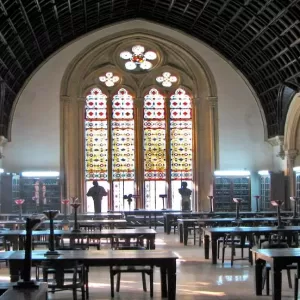





Pingback: 12 foods to be avoided for young and glowing skin - Eastside Writers